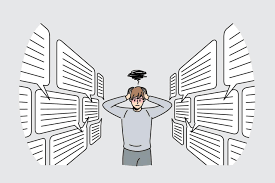 February 2023
February 2023
At one time condominium community communications was nothing more than a paper notice posted in elevators, mailroom and high traffic areas. There may have been a monthly or quarterly newsletter distributed to each door. Today there is a flood of communication methods, channels, systems, technologies and apps. It can be easy to go overboard. Too many communication channels and systems create unnecessary effort without any benefit.
Forward thinking communities seek a unified experience that brings together all internal communications and seamlessly integrates with other information systems.
In addition to legally mandated disclosures, internal communications and information systems for a high-rise community are a combination of:
- Resident and owner records
- Information notices printed and placed in high traffic areas
- Electronic notices on monitors or distributed in place of printed notices
- Resident communications and service requests
E-mail, internet, intranet, text, Facebook, WhatsApp and Snapchat are just a few of the currently popular communication platforms. Utilizing all of them makes no sense if it quadruples your workload without any appreciable benefits or reaching more residents.
Too much information floating around in too many channels is unhelpful and possibly harmful.
Condo management applications link resident and owner records to their communications with management making it easier to resolve specific issues and service requests while keeping all parties updated. Sending text messages and posting of general information is equally simplified thus improving communication without adding to workload. That elevator notice posted electronically can be available on the intranet for resident access at their convenience long after the notice has been removed.
Avoid Social Media Platforms
 Platforms such as Facebook and chat boards are popular because they are inexpensive or free. They lack central oversight or management making it difficult to control content or distribution. While residents may choose to communicate on these platforms, they are not a reliable source for official and accurate information provided by building management or the board. Where these platforms are utilized, they should be monitored to ensure sensitive or false information is not being conveyed. When this is the case, clarification should be provided only through controllable channels.
Platforms such as Facebook and chat boards are popular because they are inexpensive or free. They lack central oversight or management making it difficult to control content or distribution. While residents may choose to communicate on these platforms, they are not a reliable source for official and accurate information provided by building management or the board. Where these platforms are utilized, they should be monitored to ensure sensitive or false information is not being conveyed. When this is the case, clarification should be provided only through controllable channels.







